
Please wait.

Please wait.
Individual project, Aug 2019 – Jun 2020
To perform cycloplegic refraction, dilation drops are delivered to both eyes for each medication. The drops sting, kids hate them, and restraint is often used, causing distress.
Guided by the findings of a year-long mixed methods case study into the anxiety of children during eye exams and subsequent collaborative design research methods, the proposed system allows optometrists to deliver dilation drops faster using syringes pre-loaded with a mixture of medications that twist-lock into the main device, uses visual targets to get kids to open their eyes naturally by looking up, and eliminates the need to restrain kids.
This thesis has been published and is available for download.
Infante, R. (2020). Designing for Distress in Pediatric Optometry Exams Using a Mixed Methods Case Study and Human-Centered Design. ProQuest Dissertations Publishing.

Children can be difficult to examine because they may become noncompliant if their physical and emotional needs are not met. Yet, there is a lack of studies that describe and measure anxiety throughout the entire length of an eye exam, provide qualitative themes about the exam, and investigate if physical and emotional factors and factors related to the exam are correlated with distress. This thesis starts with a descriptive mixed methods case study using a survey, observations, and field notes.
The study was approved by the University of Houston’s IRB and took place at the University Eye Institute in collaboration with licensed optometry faculty who specialize in pediatrics and their student doctors and residents.

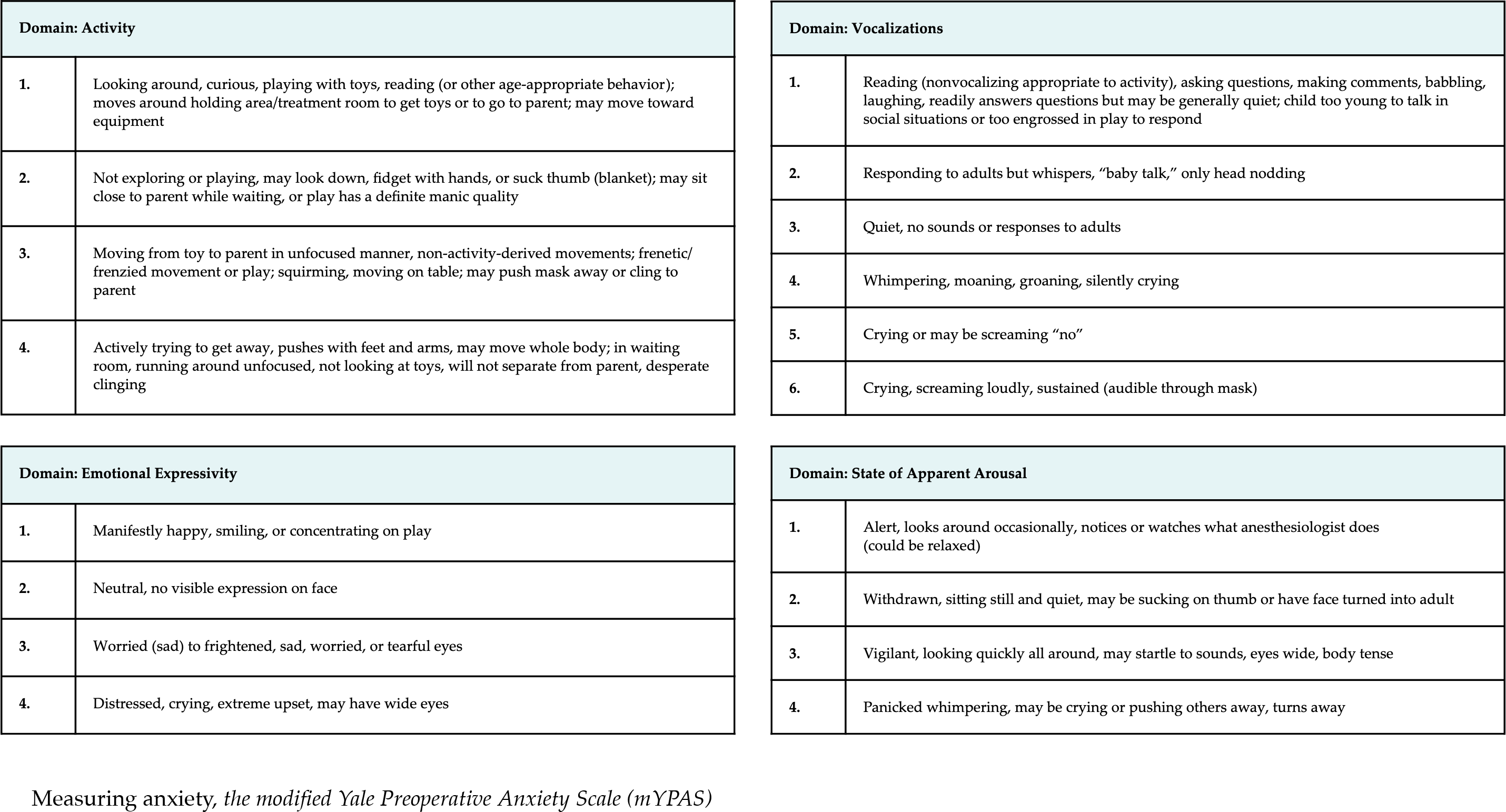





Non-parametric statistical tests were chosen based on the distribution of the quantitative data and to support the research questions. The differences between the mYPAS scores of categorical factors and the associations of mYPAS scores with continuous factors were analyzed.
Exam totals, percentages, and descriptive means with standard deviations of mYPAS scores were calculated for 8 categorical factors. Due to fragmented repeated measures data and small sample size (COVID-19), differences in marginal mean mYPAS scores between categorical factors were analyzed separately using univariate tests from multiple repeated measure Linear Mixed Models (LMMs), using a maximum likelihood method, a heterogeneous first-order autoregressive covariance structure, and post hoc least significant difference pairwise comparisons. The rationale is discussed in the thesis document.
Associations between mYPAS scores and 7 continuous factors were analyzed using two-tailed Spearman correlations. A P value of <0.05 was considered statistically significant. Statistical analysis was done using IBM SPSS® Statistics software build 1.0.0.1347 (IBM Armonk, NY).






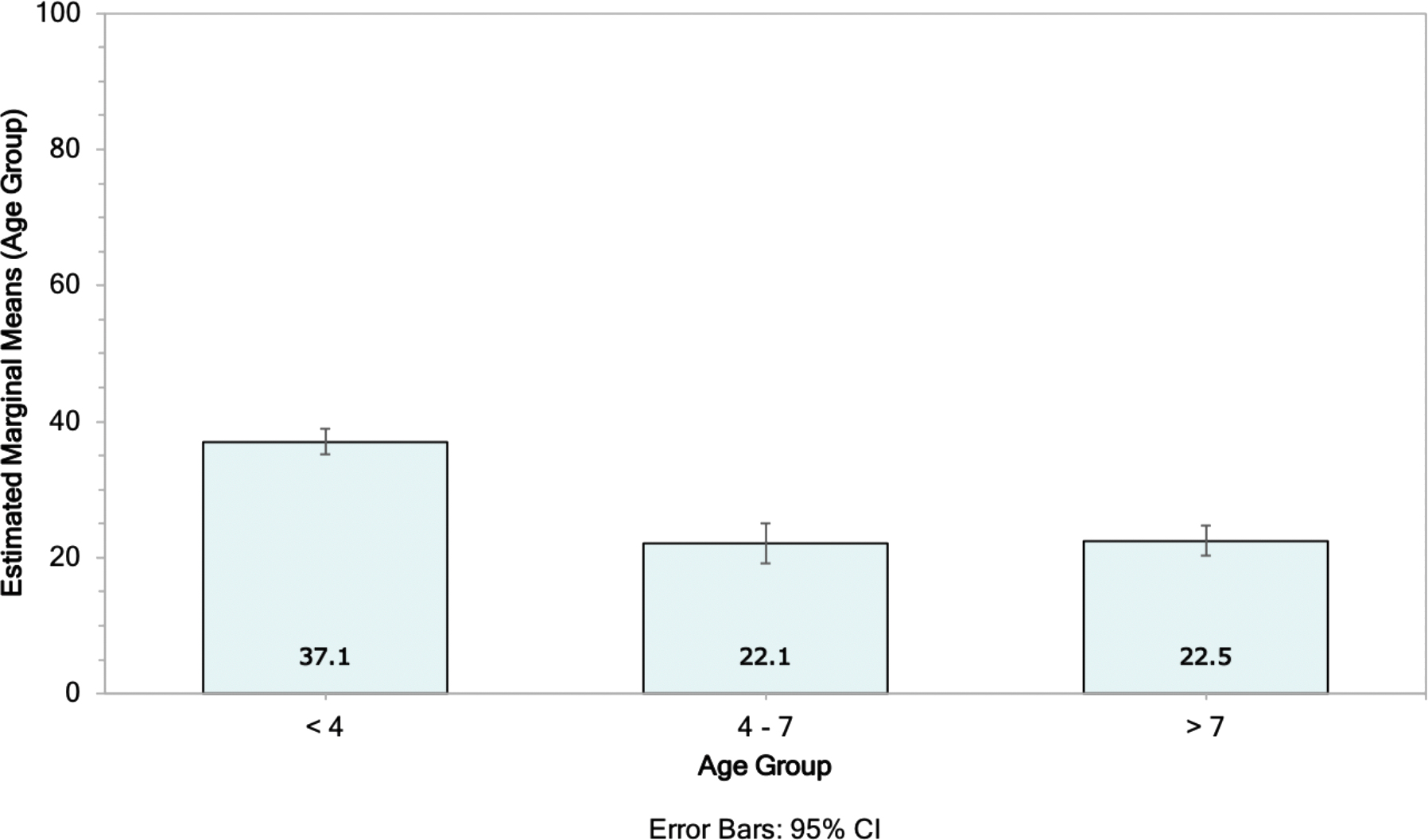







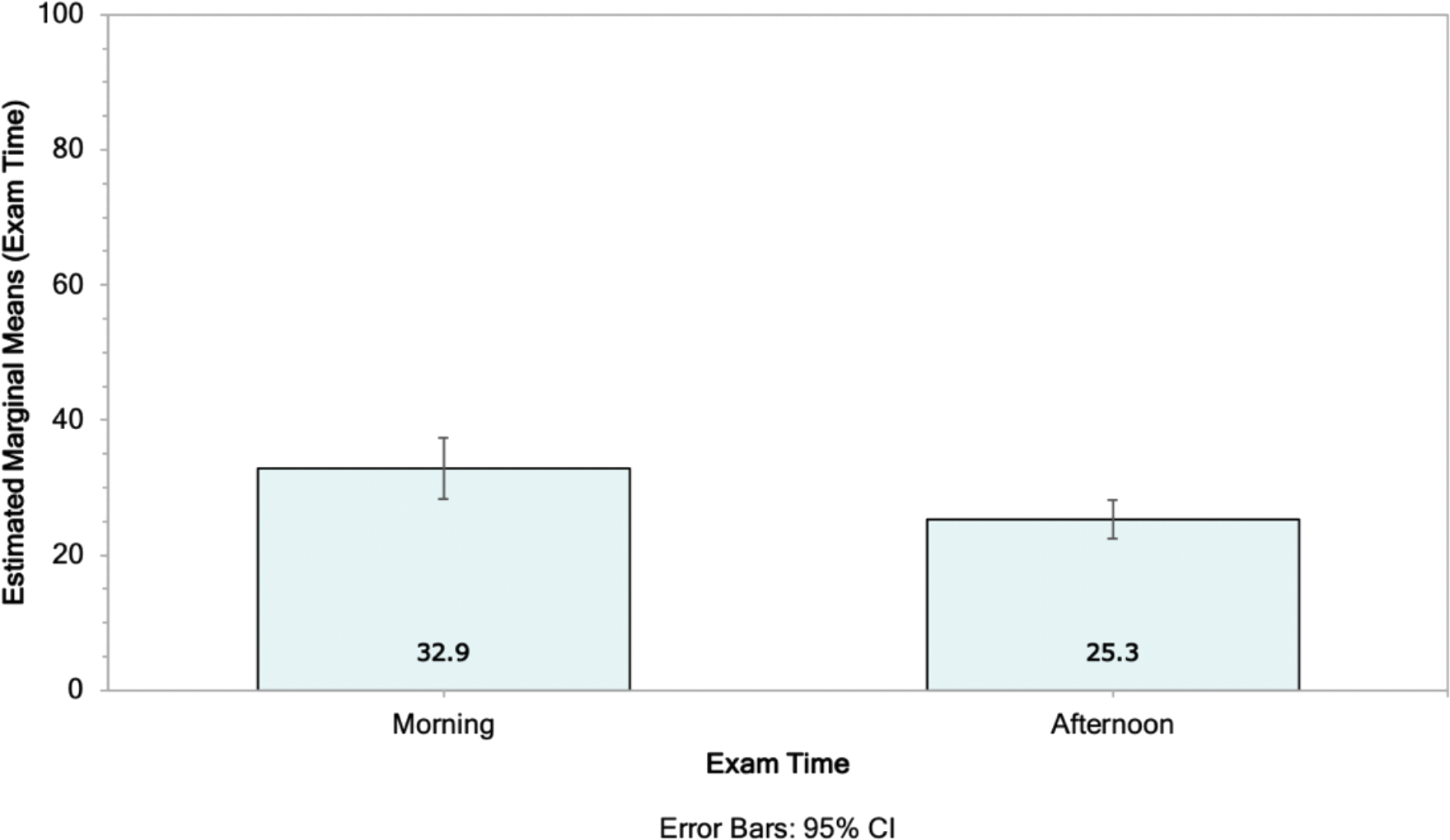





Handwritten observations, notes, and anxiety measurements were all digitized, carefully read, and analyzed. The aforementioned research questions were reviewed to provide objectives. Parts of the observations were highlighted and assigned a code.
A total of 65 descriptive codes were developed by identifying tools used, behaviors that occurred during the observations, and the apparent effect of both on the mYPAS scores. Each code was given a number and a description. Of the 65 descriptive codes, 9 of them were deemed special findings. Special findings were identified by particularly relevant but uncommon events, notable things that were said, or extraordinary occurrences. A key was developed to keep track of existing codes during the analysis, provided in the thesis.
The 65 descriptive codes were used a total of 333 times. The codes that were most prevalent accross exams and most frequently used overall were used to determine 8 key themes. This process is outlined in detailed in the thesis.


The second phase of this thesis uses collaborative design methods, the design thinking framework, and a human-centered design mindset to translate the research findings into design principles used in the development process of a product to help reduce distress in children during eye exams. The design principles led to specifications which, in turn, guided ideation and refinement.
This mixed method, data-driven, and transdisciplinary approach aims to continue ongoing conversations about the merging of scientific research and applied design research strategies as a way to better design for diverse perspectives in healthcare during a time when disparities and costs are on the rise.

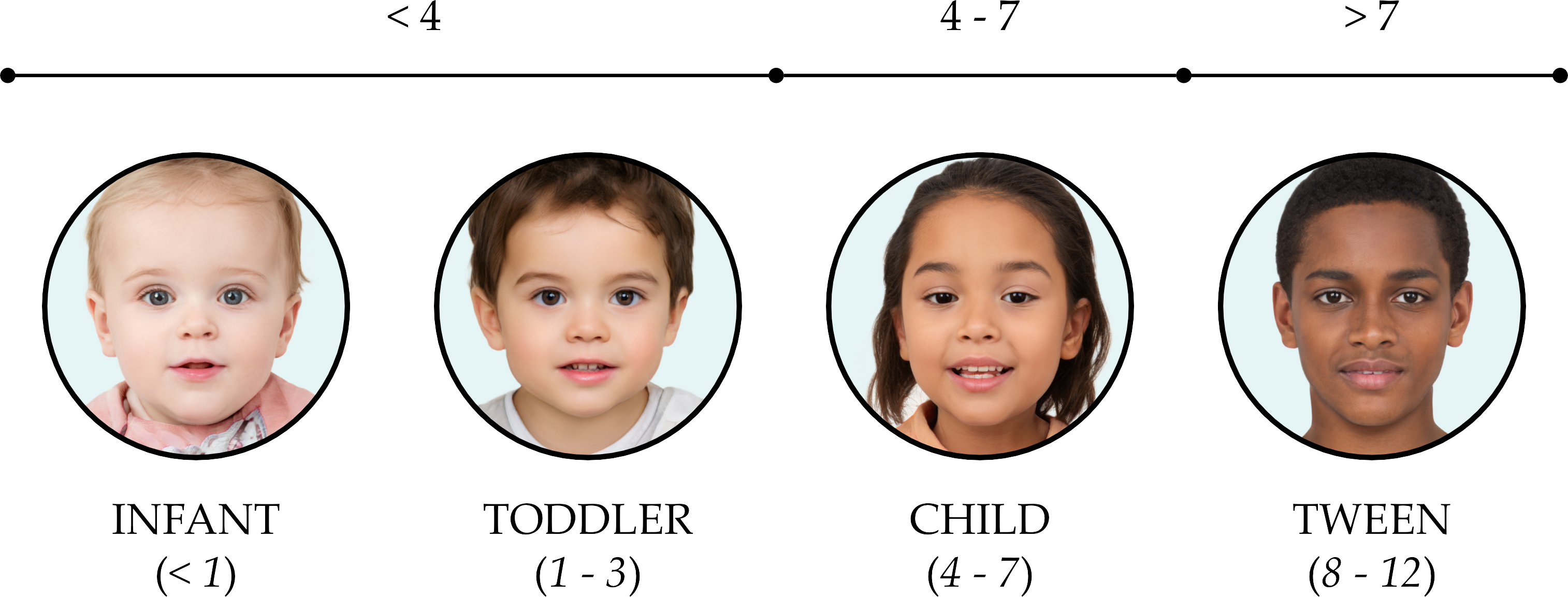



‘










The second brief, Agile Eye Drops, was determined to be most successful based on the quantity and quality of the ideas produced from the sketches. These ideas, along with ideas of my own, fueled the development of heuristic principles.
In addition to selecting a design brief, a target user persona was also selected. It was determined that the toddler persona would receive the most benefit from the brief. Toddlers are young enough that they are unlikely to have had many eye exams and are unlikely to remember the exams they had as infants. They are old enough to have conditioned fears, yet they are generally not emotionally mature enough to control fickle emotions. Moreover, they have developed enough motor skills and are large enough to need restraint when distressed.


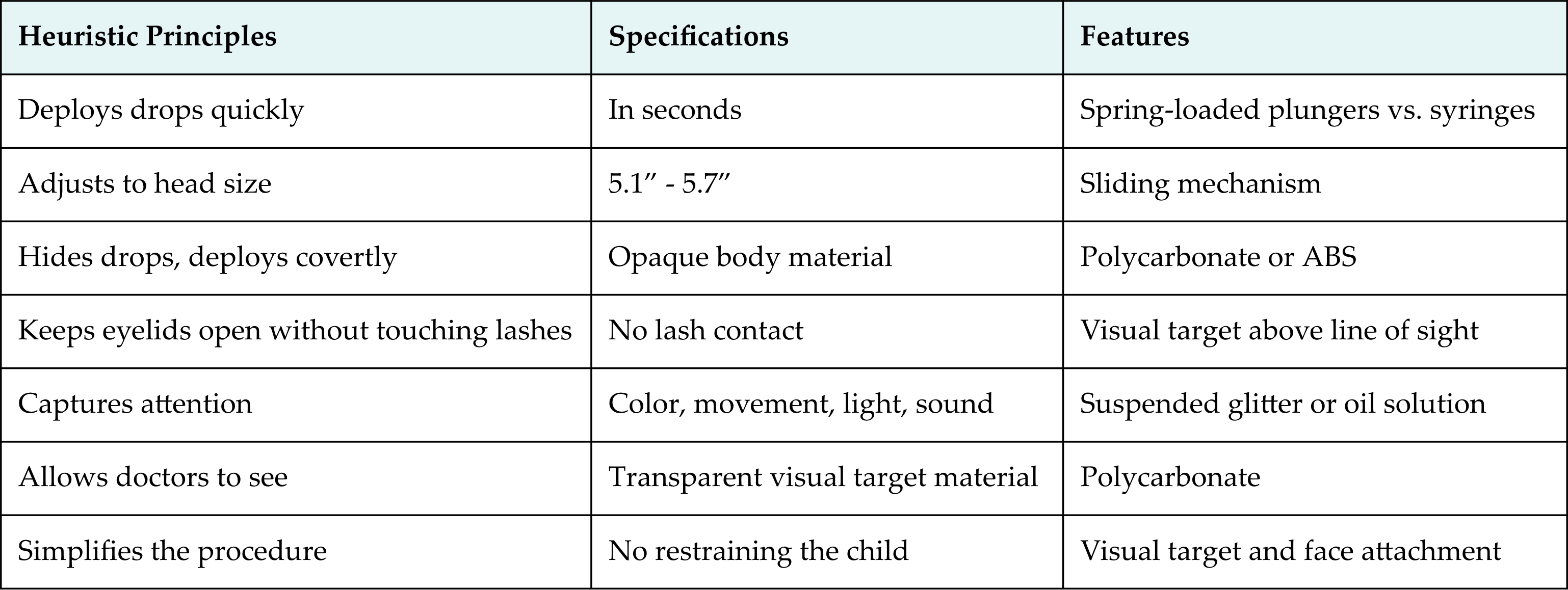




The proposed system allows optometrists to deliver dilation drops faster using syringes pre-loaded with a mixture of medications that twist-lock into the body, uses visual targets to get kids to open their eyes naturally by looking up, and eliminates the need to restrain kids.







